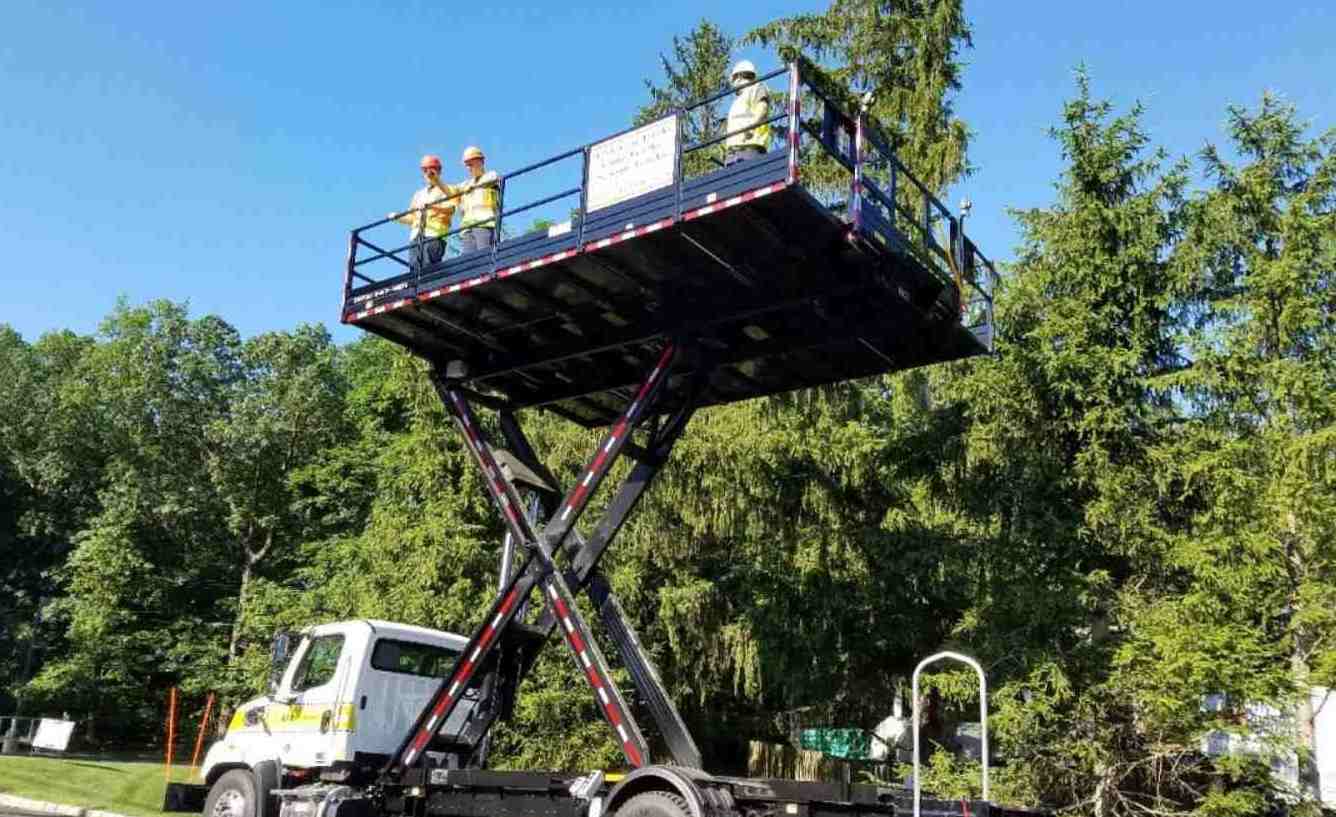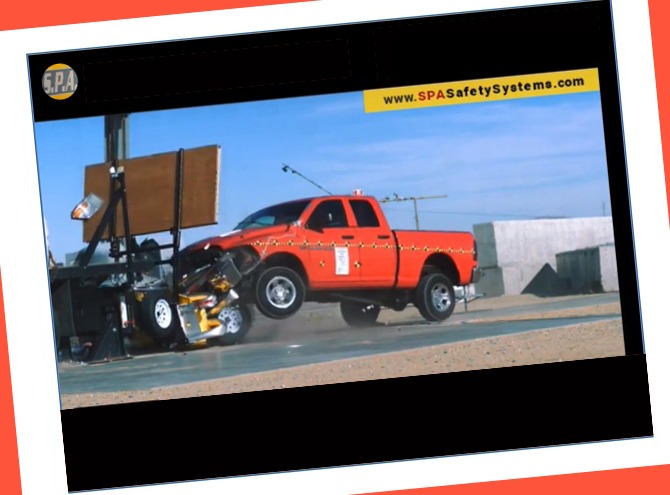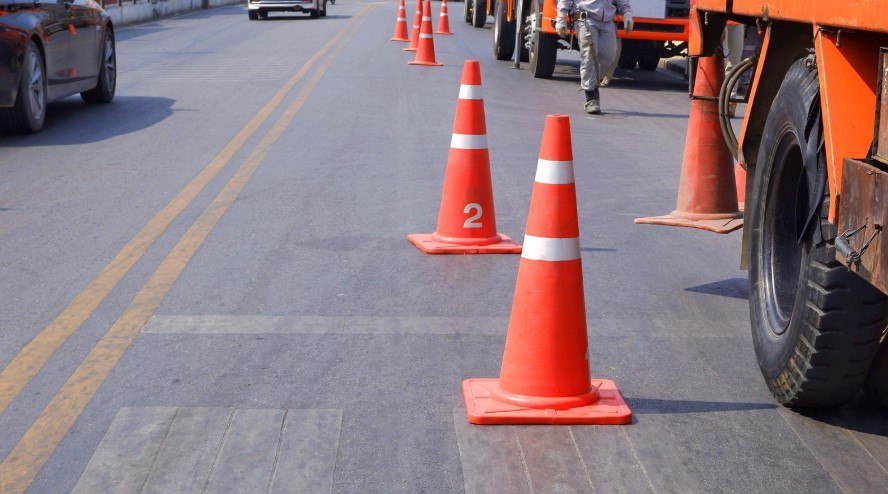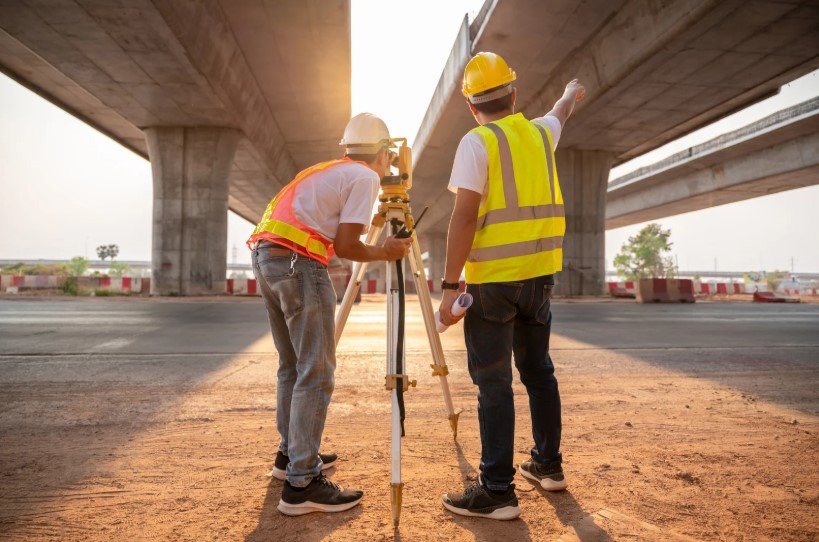Maximizing Driver Attention to Work Zone Warning Signs
“Truck Mounted Attenuators (TMA), Outperforms Any Other Practice”
Studies have shown that rear-end crashes in the advance warning area for a work zone are the most common type of work zone crashes. Driver inattention (or distraction) is reported as the most common issue and a major contributing factor to those types of crashes. As such, there is a need to identify the technologies that are successful in alerting drivers when approaching work zones.

Changeable Message Signs
Changeable message signs (CMS) are ideal for short-term and mobile work zones due to their portability. For CMS displaying text messages, innovative use of fonts and content may achieve greater speed reduction. Graphic-aided CMS are found to be more legible and recognizable compared with text-message CMS.
The location of CMS has significant impact on the effectiveness of this technology; placing in advance of a work zone is recommended.
Rumble Strips
Usually two to three sets of rumble strips are used together, with two or three strips in each set. Studies suggest that 6-inch-wide strips may generate sound 4 dBA higher than 4-inch-wide strips. Eight strips per set may increase the sound up to 5 dBA higher compared with 4 strips per set.
The ease of installation and removal are major concerns for using rumble strips, and portable rumble strips are recommended for short-term work zones. The majority of the studies found reductions in vehicle speeds up to 10 mph.
Presence of Police Cars
The presence of police cars may reduce car speeds by 4.4 mph and truck speeds by 5 mph (in a 45mph speed zone). Highspeed drivers are found to be more affected by police enforcement. Despite the effectiveness of police cars, ‘‘halo’’ effects and high costs are known to be the two main drawbacks of the technology.
Variable speed limit
Implementations of variable speed limit (VSL) resulted in reduced speed variance, increased speed compliance, and improved traffic throughput and safety. The heart of VSL is the control algorithm, which determines appropriate speed limit; the speed-flow-density algorithm is shown to have good performance based on simulation experiments. Field studies suggested that VSL could be used to increase speed limit at the bottleneck of work zones.
Drone Radars
The effectiveness of drone radars to alert drivers depends on the number of radar detectors. It has been reported that radar drones are not effective in reducing vehicle speed.
Intelligent Transportation Systems
Public response in supporting intelligent transportation systems (ITS) deployment was found to be very positive (95%). However, its technologies are inefficient in decreasing speeds or increasing diversion in cases of low traffic volume. The type of ITS setting plays an important role in deter- mining the driver’s preferred speed through work zones. Graphics-based signs are easier for drivers to interpret quickly and result in a greater reduction of mean speeds (13% to 17%).
Driver diversion rate varies from 5.3% to 10% (on average) based on ITS implementation. Finally, crashes could potentially decrease by 2.5% to 10% using ITS.
Auditory Technology
Auditory technology with loudspeakers is an innovative method which draws drivers’ attention to work zones. The effectiveness of loudspeakers varies, and an array of multiple ordinary loudspeakers in an appropriate pattern is found to be the most suitable for long-distance auditory warnings. When this technology was implemented in a mobile work zone, a speed reduction of 2 mph and increased merging distance of 122 ft. were reported.

Truck Mounted Attenuators (TMA) Outperforms Any Other Practice
Studies have suggested that an advance warning system, 400 meters (1,312 ft.) upstream from truck mounted attenuators (TMA), outperforms any other practice. Drivers’ TMA recognition distance can also increase at night due to lower traffic volumes.
Workers are found to be safer and more efficient behind the mobile barrier trailer MBT-1 in most cases. Drivers are also positively affected by the MBT-1, and the mean vehicle speeds (,49.21 mph) past the work zone are faster during daytime hours with the MBT-1 present than without the MBT-1 (,45.24 mph). This difference is more prominent during nighttime hours.
CONTINUE READING FULL ARTICLE – 50 PAGE PDF [Read or Download]

Best Practices for Maximizing Driver Attention to Work Zone Warning Signs
CITATION:
Ukkusuri, S. V., Gkritza, K., Qian, X., & Sadri, A. M. (2016). Best practices for maximizing driver attention to work zone warning signs (Joint Transportation Research Program Publication
KEYWORDS:
work zone safety, tma trucks, synthesis, implementation, technology, alerting drivers,








